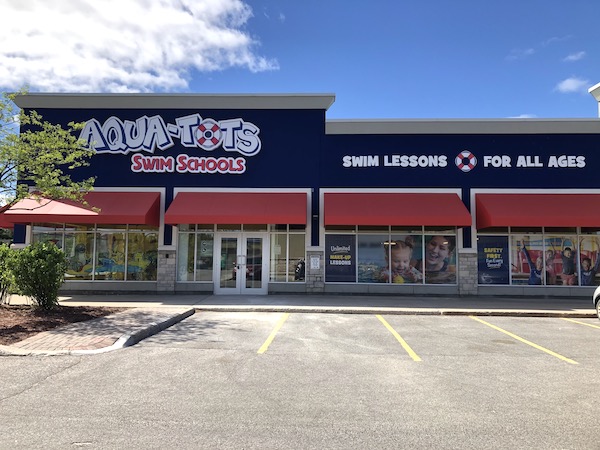Published August 25, 2023 • 7 Min Read
When starting or growing a business, owners typically require financing to achieve their objectives and reach that next level. To help more owners access the financing they need, the Canadian government is providing a partial guarantee for lenders on behalf of eligible borrowers through the Canada Small Business Financing (CSBFL) program. Made up of a term loan and a line of credit option, the CSBFL program enables businesses to start or expand their operations while taking on less personal risk than typical lending scenarios.
How the CSBFL program works
With typical loan programs, lenders require a 100% guarantee from business owners that they will pay back the loan or line of credit extended to them. For new owners and entrepreneurs, and/or those without considerable net worth, this makes qualifying for financing sometimes challenging. With the CSBFL program, the federal government is guaranteeing 85% of the loan, which means less risk for lenders and more opportunity for borrowers.
RBC Business Markets advisors Joanne Ironside and Zhengbo Jiang share the program’s ins and outs and answer the key questions borrowers are asking.
Q: What are the maximum amounts a business owner can receive?
A: The CSBFL program is made up of two components: a term loan and a line of credit. The maximum term loan amount is $1,000,000.
There are four asset classes eligible for the term loan amount. The maximum loan amount for specific asset classes is:
-
Up to $1,000,000 for real property/ building
-
Up to $500,000 maximum of the $1MM is available for improving leased property and/or purchasing or improving new or used equipment
-
Up to $150,000 maximum of the $1MM is available for intangible assets and working capital costs. Some examples of intangible assets and working capital include:
-
Up to $1,000,000 for real property/ building
-
Up to $500,000 maximum of the $1MM is available for improving leased property and/or purchasing or improving new or used equipment
-
Up to $150,000 maximum of the $1MM is available for intangible assets and working capital costs. Some examples of intangible assets and working capital include:
Intangible assets (not inclusive):
-
Franchise fees
-
Incorporation costs
-
Permit and license fees
-
Licensing/ subscription fees
-
Marketing expenses when associated with the purchase of a franchise
-
Capitalized research and development costs
Working capital (not inclusive):
-
Inventory
-
Expenses related to the development of software and websites
-
Printed materials (brochures, flyers, menus)
-
Professional fees
-
Payroll
-
Rent
Line of Credit (only to be used for working capital financing):
-
The maximum authorized limit is $150,000
Q: Are there restrictions on how the funds can be used?
A: Yes, there are limits and the financing limits have to comply with the asset class limitation as outlined above.
Q: Would I receive either the loan or the line of credit? Or could I qualify for both?
A: It can be both. For instance, should you need financing to cover the cost of inventory, you could receive a term loan for a lump sum of inventory that’s needed at the outset of your business. Then, you might need some ongoing financing for ongoing needs, which you could cover through the line of credit portion. “There is a conversation that happens between the lender and the client to determine the structure that works best,” says Ironside. “We don’t expect the business owner to have those answers – it’s our role as an advisor to work with the client.”
Q: What do I need to apply?
A: “When applying, a business owner needs a well-thought-out business plan and their numbers in order,” says Ironside. She further recommends that for those truly new to business, to work with a consultant or accountant who can lend their experience to create as realistic a picture as possible. “For those companies wishing to access funds for intangible assets or working capital costs, a balance sheet prepared by a certified CPA or CA is required,” she adds. “Quotes, invoices, purchase agreements and/or sales contracts are required to validate the amount requested for equipment and leasehold financing.”
Specifically, owners must provide:
-
Term loan:
-
For most startups and newly established businesses: Balance sheet and income projections prepared by a certified CPA or CA
-
For existing businesses purchasing assets or expanding: The most recent financial statement of the latest fiscal year
-
Proof of purchase for assets such as invoices, purchase agreements or sales contracts and appraisals (if needed)
-
Line of credit:
-
A signed attestation that the line of credit will only be used for working capital costs
Q: How do I apply?
A: Interested business owners are to contact their primary financial institution to begin the application process. You don’t need to apply through the government – your financial institution has been provided the responsibility of delivering the program and is solely responsible for approving the loan.
Q: What are the interest rates and fees for the program?
A: The maximum fixed and floating rate for the term loan is the lender’s Prime rate plus 3%, including a 1.25% annual administration fee. The maximum floating rate for the line of credit is the lender’s Prime rate plus 5%, including a 1.25% annual administration fee.
There is an additional 2% government fee to apply, which can be financed as part of the loan. Financial institutions may charge some fixed administration fees for the preparation of documents and in the case of the line of credit, monthly management fees. Registration fees must also be paid by the borrower.
At RBC our relationship managers and advisors will work with clients to fully understand interest rate and fees at time of disbursement/activation.
Q: How much will I get approved for?
A: While the government guideline approves up to 100%, the % of financing is determined by the lender based on its internal lending policies and the risk associated with the borrower. “The financing offered needs to meet both the CSBL program criteria and the lender’s policy and criteria,” she says.
Q: I am a franchise owner. Will I qualify for the program?
A: Yes, this program is very well suited to franchise owners. In order to qualify, you must have a franchise agreement in place. The amount you are eligible to borrow depends on several factors and will be determined in your conversation with your lender.
Q: Can I get approved for costs that I have already incurred?
A: Yes. The CSBFL program is a great tool to reimburse recent business purchases. You can access the program as long as the purchase was made within 365 days prior to the loan approval date.
Q: How can I access the line of credit once I am approved?
A: If you’re an RBC Business client, you can access funds to meet your working capital needs anytime through the ATM, Online Banking for Business, through the RBC Mobile App or in branch.
Q: Why would I choose the CSBFL program over a traditional loan?
A: Because the CSBFL program shares the risk with lenders, the level of personal guarantee is reduced, allowing lenders to finance more. “For instance, with a traditional term loan, a business owner would need to provide a 100% personal guarantee that they would repay the loan, which would mean they would probably be able to borrow less,” says Ironside.
The other advantage is that the CSBFL program offers a set interest rate. “With most term loans, the interest rate is based solely on the risk assessment,” says Ironside. “It could be higher or it could be lower, depending on the risk – but with the CSBFL program, you’re not going to get higher than Prime plus 3% for the loan portion, or Prime plus 5% for the line of credit portion. Those rate maximums are set.”
Learn more about the CSBFL program today
Government-Guaranteed Loans to Support the Growth of Your Business
* Other program terms and conditions not listed in this article may apply.
Complete information about the Canada Small Business Financing (CSBFL) program can be found at the Canada Small Business Financing Program. Other program terms and conditions not listed in this article may apply.
This article is intended as general information only and is not to be relied upon as constituting legal, financial or other professional advice. A professional advisor should be consulted regarding your specific situation. Information presented is believed to be factual and up-to-date but we do not guarantee its accuracy and it should not be regarded as a complete analysis of the subjects discussed. All expressions of opinion reflect the judgment of the authors as of the date of publication and are subject to change. No endorsement of any third parties or their advice, opinions, information, products or services is expressly given or implied by Royal Bank of Canada or any of its affiliates.
Share This Article






